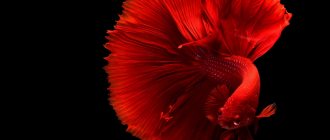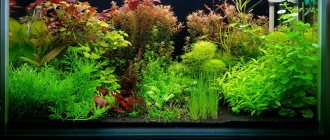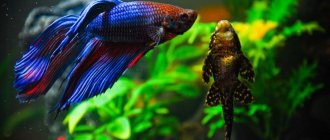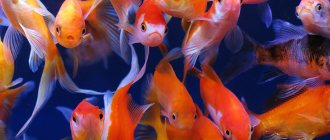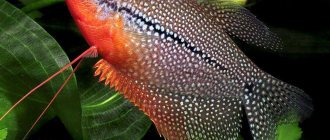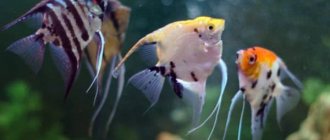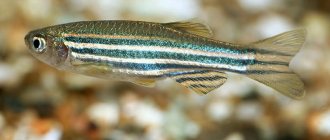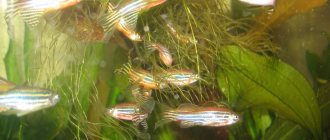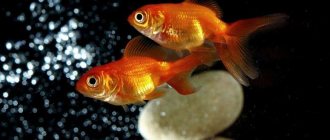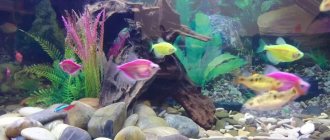Many people know the myth that tells that one of the Greek goddesses was born from sea foam. This story is fiction and will forever remain a legend. However, in fact, there are living creatures that are born in foam, albeit from fresh water. We are talking about labyrinth fish. These include Siamese fighting dogs. The breeding of betta fish is accompanied by a significant number of rituals and looks like a well-staged show. This process is unlikely to leave anyone indifferent.
general description
Breeding bettas in an aquarium is a fascinating sight. It often happens that no special efforts have to be made: the desired microclimate, temperature and chemical composition of the water are created in the home pond. However, it is worth taking a very responsible approach to the issue, providing optimal conditions for the fish.
If we talk about general requirements, then the following should be specially noted: a sufficient temperature of about 27 degrees, ph in the range from 6.7 to 7.3, so water that is too hard and old is not suitable.
Breeding cockerels at home can be divided into several separate stages that require serious thought and preparation:
- pair selection;
- preparation for spawning;
- spawning itself;
- rearing and development of fry.
Content Features
There is nothing difficult about keeping cockerels. Even novice aquarium enthusiasts can handle this just fine. First of all, it should be noted that they do not require a very large volume of the home aquarium. But it’s better to provide them with space, otherwise these fish will be uncomfortable and may get sick. Due to the presence of a labyrinth organ, these fish partially use atmospheric air for breathing. Therefore, aeration of the aquarium is not required for them. The water temperature, comfortable for bettas, is approximately 25-26°C, pH – 6.5-7.3. The water should be changed weekly.
How often can cockerels spawn?
The intervals between spawning must be determined based on a large number of factors. It is important to use an individual approach in each individual case. Some females collect eggs slowly, others quickly. Some fish may not be able to get rid of eggs without outside help. Therefore, the question of how to find out when a female betta is ready to spawn is very difficult. Spawning is necessary only when the fish has a significant “belly”, which is clearly visible even before feeding begins.
The requirements for spawning on the part of the male are not so stringent. There are no exact rules in this matter. But there is no need to spawn more than once every two weeks. Otherwise, the male may become exhausted.
Compatibility with other aquarium inhabitants
Cockerels of those varieties that have lush, voluminous fins are not kept with other fish. Neighbors for fighting aquarium inhabitants should be selected carefully; they should be active individuals capable of self-defense. You can add swordtails, speckled catfish, neon rainbowfish, and Siamese algae eaters to the cockerels.
Matching
Before breeding these fish, it is important to decide on the goals being pursued and the desired result. The approach to breeding activities and simply the desire to get offspring is somewhat different. If we are talking specifically about selection, then identifying a pair is incredibly important . But if there is no such interest and two males of different sexes live in a common aquarium, then there are few options and the choice is obvious.
Sex differences in fish are quite clearly expressed; for the most part, there are no difficulties in determining sex. The female and male, whose differences from each other appear at the age of three months, must be the same size, and preferably the same color. Females have a white egg-like formation on their bellies; in addition, they have a more faded coloring and their fins are modest. Cavaliers amaze the imagination with the brightness of their coloring, beauty and length of tails.
It should be noted that the older the male, the more amazing his fins look. This is why it is extremely difficult to determine the sex of young individuals under 10-11 weeks of age. Betta fish that have grown up to 5-6 months, but not older than one and a half years, are suitable for reproduction. In more mature fighters, the ability to bear offspring noticeably decreases, various defects and injuries appear, and mortality among fry is high.
Sexual differences in aquarium bettas.
If you plan to specifically purchase female and male cockerels for spawning, then it is advisable to do this from professional breeders. Determining the age of a fish sold in a pet store can be quite difficult. In addition, if the individuals are too young, you can buy same-sex representatives and will have to purchase more.
Female and male: differences
You can visually identify a male or female from the age of three months. There are several signs that distinguish a female betta fish from a male:
- Female betta fish are slightly smaller in size than males.
- The male individual is distinguished by a luxurious tail, and long fins, reminiscent of sails, with a brighter color in comparison with the fins of chickens.
Interesting: If a female cockerel was under stress, for example due to a change in environment, her color may become as bright as that of a male. In this case, it is almost impossible to determine the gender of the fish.
- The female , as a rule, is calmer than the self-confident and aggressive male.
Important! During the spawning period, the male betta fish becomes more hostile to its direct competitors and to fish of other species. To avoid collisions and fights, it is necessary to create hiding places in the aquarium.
- On the belly of the female there is a small white formation similar to an egg.
Yellow cockerel
Preparing the spawning tank
For breeding bettas, an aquarium with a volume of 20-40 liters, filled with water to a height of 10-15 cm, is suitable. The aquarium must be equipped with a heater, lighting, and a filter. The water should be settled for 3-4 days, with a pH of 6.7-7.3. Hard old water will not work.
At the bottom of the tank for spawning bettas you need to fix a couple of holly plants. Place small floating algae on the surface of the water, in small quantities - riccia, duckweed, watercolor. They will be additional building material for the nest.
You can make a spawning tank for a betta yourself, for example, like in this photo. Here the female was placed in an aquarium with the male in a separate container.
Do not place pebbles or sand at the bottom of the aquarium; fallen eggs can easily get lost in the soil. Equip a grotto or other shelter for the female.
The optimal temperature for the start of spawning is 26-28˚C. The lighting should be dim and the filter turned off. The aquarium is located in a quiet place where no one will disturb the fish.
Simultaneously with preparing the breeding site, you need to take care of food for the fry in the first days of life. A three-liter jar is filled 2/3 with water, placing a piece of banana peel on the bottom. Add a teaspoon of milk. Place the jar in a warm place. After 3-4 days, you can notice the first ciliates that appear. In the summer, ciliates are grown in a garden barrel, putting hay dust in the water.
How we see ciliates with the naked eye and under a microscope.
The pet store buys a culture of microworms, which will be needed a little later. When the baby cockerels grow up noticeably.
Spawning
The male is first introduced into the breeding aquarium. He begins to build a nest from air bubbles, holding them together with saliva and parts of floating plants. The result is a cap of foam that rises above the water. The bright coloring of the partner and the completion of construction are signals that the time has come for the placement of a pregnant female.
The cockerel chases the female, delivering sensitive blows. At some point, the cockerel wraps itself around its partner, squeezes the eggs out of its abdomen and pours milk on it. The male picks up the fertilized eggs and carries them to the nest. The mating process is repeated 1-4 times. A sign of the end of reproduction: the male is busy with the nest, the female is hiding in a shelter. The female fish needs to be removed at this time.
If the males do not start breeding, they take measures: raise the temperature to +30˚C, soften the water using peat additives from the pet store, change some of the water. During one spawning, the female lays more than 600 whitish eggs of irregular shape.
The male wraps himself around the female and helps her push out the eggs.
Cockerels are not fed during breeding so as not to spoil the quality of water in the spawning area. This does not have any negative consequences for adult fish.
What care do fry need?
You should constantly ensure that the fry have food. You should start feeding small fish with ciliates
. This food is bred in advance, before spawning begins. To get ciliates, take a two-liter jar of water, add a teaspoon of milk and a small piece of dried banana peel. At first the water will darken, but after a couple of days it will become lighter, and infusor “clouds” will appear there. It is recommended to collect such food using a hose in the light. After which they are placed in the aquarium with the fry.
If ciliates are not at hand, you can use dry food
.
Snails and boiled yolk
are also useful as additional nutrition . It is worth noting that fry may not eat non-living food due to the fact that it does not move. In addition, such feeding very quickly pollutes the water.
The fry must be provided with an air spray with extremely low pressure. This is necessary because the labyrinthine apparatus is poorly developed in children.
The frequency of water changes depends on the food that the small bettas eat. If the fry feed
dry food, you should change at least 80% of the water daily. If you constantly consume live food, there is no need to frequently change the water in the aquarium.
3-4 days after such feeding, the fry can be switched to artemia
. It is also grown independently and in advance. To do this, you need to visit a pet store and purchase brine shrimp eggs. Then you need to fill a two-liter bottle with water, add 1.5 tsp. salt and the same amount of brine shrimp eggs. For a day you need to turn on strong aeration, after which the empty shell will float to the top, and the brine shrimp will swarm at the bottom of the container. You will also need to remove this food using a hose.
If you direct a beam of light to one corner or closer to the surface, the brine shrimp will gather in the light. This may make it easier to catch.
It is advisable to install not one, but two containers with live food, one day apart. Then food for the fry will be constantly available. The fry need to be fed twice a day. It is recommended to rinse the brine shrimp through gauze before feeding so as not to introduce a portion of salt into the baby’s aquarium.
As soon as the fish switch to brine shrimp, you should slightly increase the water level in the aquarium. A week or two after changing the diet, the fry can be given microplankton, small worms
, and after a little more time -
cut tubifex
.
Fish - cockerel: Siamese fighters are also no strangers to romance!
Those who are interested in aquariums know for sure: the world of indoor fish is complex and extraordinary. It has its own rules and characteristics. He is emotional, bright and ambiguous. And, first of all, thanks to such representatives as the Siamese cockerel. These aquarium fish are a real demonstrator of intersexual relations, the instinctive distribution of roles in a pair of individuals and the responsibility of each for their own biological segment.
We need to take care of the health of future offspring
Before mating begins, it is important to ensure the usefulness of the individuals involved in the future process. Select fish up to 12-15 months of age, preferably identical ones
They must be healthy and vigorous. It is better to observe their behavior for a week before choosing. If there is visible causeless sadness, apparent fatigue and a change in appearance, it is not worth the risk. It’s better to delay the result, but be confident in it. The selected pair should be replaced. Then you need to provide them with a complete and high-quality diet for a couple of weeks, consisting of the components necessary to ensure all biological characteristics. What to feed? The food may consist of crushed insects, crickets, bugs, bloodworms and brine shrimp. Dry food should not be abused at this moment - it is poor in biologically active components, which are building materials for the body of future offspring
Fish are selected up to 12-15 months of age, preferably identical ones. They must be healthy and vigorous. It is better to observe their behavior for a week before choosing. If there is visible causeless sadness, apparent fatigue and a change in appearance, it is not worth the risk. It’s better to delay the result, but be confident in it. The selected pair should be replaced. Then you need to provide them with a complete and high-quality diet for a couple of weeks, consisting of the components necessary to ensure all biological characteristics. What to feed? The food may consist of crushed insects, crickets, bugs, bloodworms and brine shrimp. Dry food should not be abused at this moment - it is poor in biologically active components, which are building materials for the body of future offspring.
This approach will ensure that a large number of eggs are useful for the development of babies.
And now “steaming”...
Selected and prepared individuals are introduced to each other by placing them in neighboring aquariums. They need to be equipped beautifully and safely:
- the walls must be transparent so that the fish can see each other;
- plants should not create a threat of breaking fluffy tails and fins;
- the soil should not have hard or sharp components so that the fish do not damage parts of their bodies;
- the habitat must provide an opportunity to hide and “be alone with your thoughts.”
Too bright lighting is not necessary, but short-term natural insolation (exposure to sunlight) will not hurt.
From this moment on, observation is the best friend of those who decide to master the breeding of cockerels. This stage can have several development options. A negative path is also possible: the males’ sympathies may not arise. This will be noticeable even to an inexperienced aquarist. Unreasonable aggression or, on the contrary, complete indifference is a lack of mutual interest.
But if a female cockerel looks affectionate and soft, her fins are somewhat pressed to her body, and a hint of vertical stripes or spots in the middle appears on her body, she liked her new friend. A male's interest in reproduction can manifest itself in two ways:
- increased aggression;
- preening by spreading out the fins and tail, increasing the brightness of color, expressiveness of behavior.
Observing such signs, you can be sure: the couple has taken place.
Possible problems
Fish are very sensitive to any environmental changes. In order for them to begin to mate successfully, you need to be attentive to details:
- It is important to monitor the water temperature. In preparation for spawning and during spawning, the water temperature should be +27...+28 degrees.
- Keep fish away from direct sunlight.
- Cover the aquarium with a lid. The cockerels jump well.
- Do not use bottled water to fill the aquarium.
- Do not feed the fry dry food.
- Do not place natural shells with sharp edges in the aquarium.
To breed cockerels at home, you should choose pairs with the same fin shape (veiled, crown-tailed, etc.). The dominant color of these fish is red. This should also be taken into account when crossing, so that the reproduction of betta aquarium fish occurs predictably.
WHAT AND HOW MANY TIMES A DAY SHOULD YOU FEED A SCALARIA IN THE AQUARIUM
BREEDING ANKALARIUS IN A COMMON AQUARIUM
COMPATIBILITY OF COCKERS WITH OTHER FISH IN THE AQUARIUM
DISEASES OF MACROPODS: CAUSES AND TREATMENT
Habitat in nature
Under natural conditions, betta fish are found mainly in Southeast Asia in calm fresh water bodies: streams, rivers, and sometimes in rice fields. It should be noted that in nature their coloring is not at all so luxurious, although in some cases they appear to be dressed in beautiful outfits in natural reservoirs. They often live in rather muddy water, which is why they have a greenish-gray color. However, with the help of selection, it was possible to develop varieties of red, blue, purple and other bright colors, as well as with different shapes of fins and with a tail in the form of a crescent, crown, tassel, double, etc. Males are more brightly colored.

